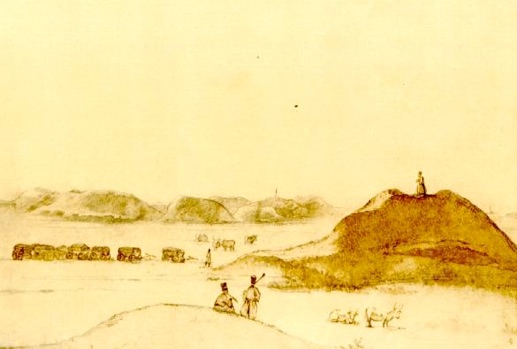Boikivshchyna
Ethnography
Boikivshchyna
Ethnography

The Boikos differ from their neighbors in language (the Boiko dialect), dress, folk architecture, and customs.
Until recent times the Boikos wore domestically made clothes: linen trousers and shirts, sheepskin vests (the bunda), short coats (the kyptar) or woolen overcoats (the serdak), coarse woolen coats of a gray or brown color (the hunka), wide-brimmed hats (the bryl), light but strong leather shoes (khodaky), and wide leather belts.



The women wore shirts, fancy skirts (the maliovanka), and white linen wrap-arounds.



The Boiko shirt was embroidered with a geometric pattern and sometimes with a plant ornament of one (black or red) or two colors (black and red or red and blue).


You can read more about Boiko embroidery and costumes here. The same colors appear on Easter eggs with archaic ornamentation consisting of crosses or rhombuses:

In folk architecture a unique type of house with a porch has been preserved in the Boiko region

as have the three-domed Boiko churches with their distinctive arcade:

Historically the Boikos supported themselves mostly by animal husbandry. They have been engaged mostly in agriculture (growing oats and potatoes) and dairying (formerly sheep grazing and ox breeding). They find supplementary work in lumbering, in the petroleum industry, and in gathering and selling mushrooms and berries.
Certain settlements close to the trade route that crossed Boiko territory and ran through the mountain passes practiced trading for centuries. In the past the Boikos carried salt (Staryi Sambir was once called Stara Sil, or Old Salt) to Galicia and Volhynia.

Then, when the Austrian government established a monopoly on salt, a trade in fruit developed. Boiko fruit merchants could be encountered up to 1914 not only in the towns of Galicia/Halychyna but also in Saint Petersburg, Budapest, Bucharest, and even on the French Riviera.
In the 20th century the Ukrainian national awakening took place, and the Boiko region produced a large number of Ukrainian cultural and political figures.
Back to Boyko Home
Back to Carpathian Pysanky Home
Back to Regional Pysanky Home
Back to Traditional Pysanky HOME
Search my site with Google
The Boiko Way
